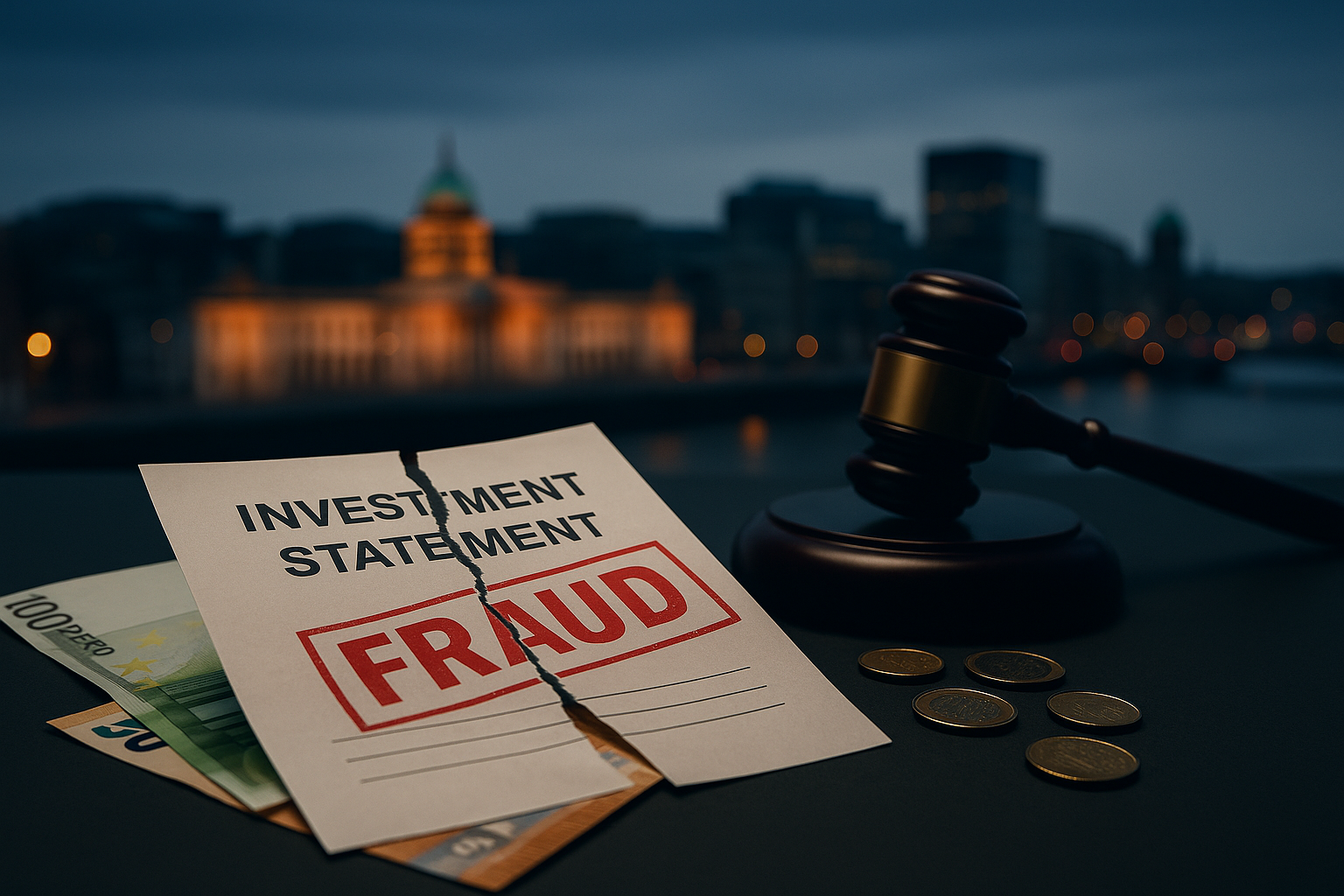Custom House Capital once stood as a trusted name in Ireland’s investment world. It offered bold ideas, managed millions, and built confidence with clients. The firm promised high returns, personal attention, and strong financial planning. Many investors believed they had found a solid place to grow their wealth.
At first, everything seemed right. Clients saw smooth reports and friendly service. The company looked successful. It talked about smart strategies and showed charts with growth. People felt safe because Custom House Capital had approval from regulators. They trusted it with pensions, savings, and big life plans. Some even moved their full retirement plans into the firm’s care.
Behind the scenes, trouble grew. Auditors missed signs. Regulators stayed quiet. The leadership made risky moves, but few knew. It became clear much later that the company had not followed the rules. Money had gone missing. Clients were in shock. A trusted name turned into a major financial disaster that shook public confidence in the whole system.
This article breaks down the truth. It explains what happened, who got hurt, and why the case still matters. Readers will see how fraud can hide in plain sight, how failure spreads fast, and how investors must protect themselves from smooth talk and false safety.
The Rise of Custom House Capital
Custom House Capital started with big goals. It wanted to offer smart wealth planning and private investment services. The firm focused on clients who had real money to invest. Many of them were older, planning retirement, or handling family assets that had taken decades to build.
The team included skilled professionals. They spoke with confidence and used strong words like “portfolio management,” “diversification,” and “strategic returns.” These words built trust. Investors liked the idea of custom planning. The firm made people feel important. Many clients came through word of mouth or through referrals from financial advisors.
Over the years, Custom House Capital grew. It managed over €1 billion in client money. It moved into new offices. Its name appeared in financial circles across Ireland. People saw it as a rising star. Media called it a boutique firm with a personal touch. On paper, it looked like success. Clients saw growth on their statements and believed they had made the right choice.
How the Fraud Worked
The fraud at Custom House Capital was not quick. It took years to unfold. Some parts started as mistakes. Others grew from pressure. The company made promises it could not keep. To cover losses, it moved money without permission. That step broke the law and triggered a chain of false moves.
Instead of admitting problems, the company shifted funds. It used money from one client to fill gaps for another. This kind of move is illegal. It creates a false picture of safety. The books looked balanced, but only because money kept moving around. It worked like a Ponzi-style setup within a regulated shell.
The managers also gave false reports. They sent fake statements that showed gains, not losses. Clients believed their accounts were fine. Some even gave more money. In truth, the system was falling apart, and every new deposit delayed the collapse.
The Warning Signs That Got Ignored
There were signs. Some employees raised concerns. Some clients asked questions. But the leadership dismissed them. Auditors missed key clues. Regulators received hints but did not act fast. Internal systems showed gaps, but no one followed up.
The Central Bank of Ireland later admitted it should have stepped in sooner. Weak oversight allowed the fraud to spread. The firm stayed open longer than it should have. That delay cost people millions and damaged the credibility of the financial watchdogs.
When a whistleblower finally came forward, the truth spilled out. Investigators found records that showed how money moved in circles. The picture shocked everyone. People wondered how a licensed firm could fall so far. The documents painted a pattern of deceit that lasted over a decade.
Impact on Investors and Families
Over 1,500 clients lost money. Some lost life savings. Others lost trust in the whole system. Retirees felt crushed. Families faced years of court battles and stress. Many had counted on that money for basic needs like home care, children’s schooling, or final retirement plans.
The emotional toll ran deep. Some clients felt embarrassed. They had chosen Custom House Capital with care. The firm had looked safe. Its staff sounded smart. But in the end, promises broke, and people paid the price. Family arguments, health stress, and legal delays added to the pain.
Even those who got some money back still lost time and peace of mind. Some had to delay retirement. Others had to sell homes or change plans. The damage went beyond numbers. It affected marriages, future planning, and people’s trust in the financial world.
The Legal Fallout and Jail Time
After the scandal broke, the state stepped in. A major investigation followed. The courts looked at documents, emails, and testimony. Several former executives faced charges. The trial took years and brought media attention across the country.
In the end, top figures at Custom House Capital were found guilty. The court said they abused trust and broke the law. Sentences followed. Jail time sent a strong message: financial crime carries real punishment. The judge used strong words to describe the harm done.
The case became one of the most serious white-collar crimes in Ireland. It showed that even regulated firms could fail. It also showed that the system needed better checks. The fallout reached not only clients but also shook the entire financial services industry.
Lessons for Investors and Lawmakers
This collapse gave investors a harsh lesson. Reputation is not enough. Clear records, strong rules, and real oversight matter. Clients must ask questions. They must read reports and understand how money moves. They must not depend only on trust or smooth presentations.
Lawmakers also took note. Ireland improved its financial laws. The Central Bank tightened rules. Auditors faced more pressure to dig deeper. The case pushed the system to grow stronger. Watchdog agencies reviewed how they work and added more controls.
Still, no rule stops all risk. People must stay alert. Fraud often hides behind charm. Custom House Capital looked polished. That made the truth harder to see. But mistakes and greed do not stay hidden forever. The case proved that transparency must be more than just a word.
Conclusion
The fall of Custom House Capital shook Ireland’s financial world. It hurt people, exposed gaps, and called systems into question. It showed how easy it is to believe a lie when the surface shines bright. The case sent shockwaves that still echo in financial circles.
Clients trusted a firm that failed them. Regulators missed the early signs. Even smart investors felt the sting. The case left scars. It also gave warnings. No one can afford blind faith in money matters. Every promise must come with proof. Every firm must stay open to review.
But from damage comes growth. The system changed. Laws improved. Investors learned to ask more, check deeper, and trust less without proof. The story of Custom House Capital now serves as a warning. It shows what can go wrong when risk hides in smooth words and smiling faces.
In the end, truth came out. Justice followed. But the cost was high. Trust takes years to build. It breaks fast. And once broken, it leaves a mark that never fully fades. But from that scar, people now carry lessons that can prevent the next disaster.
Some investors who trusted Custom House Capital had plans to invest in luxury home upgrades. Many followed design trends like those featured in Roger Morph’s modern outdoor spaces.




